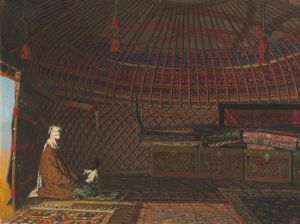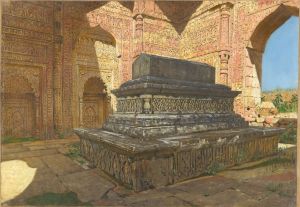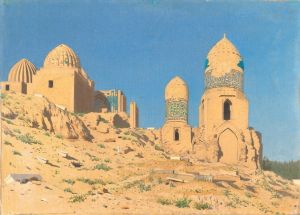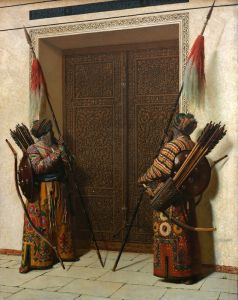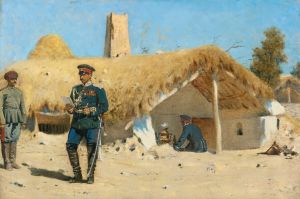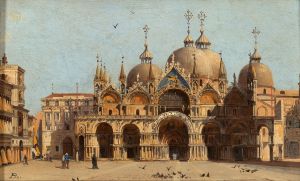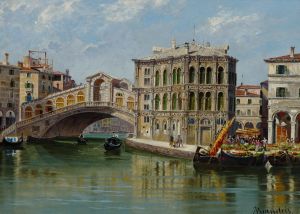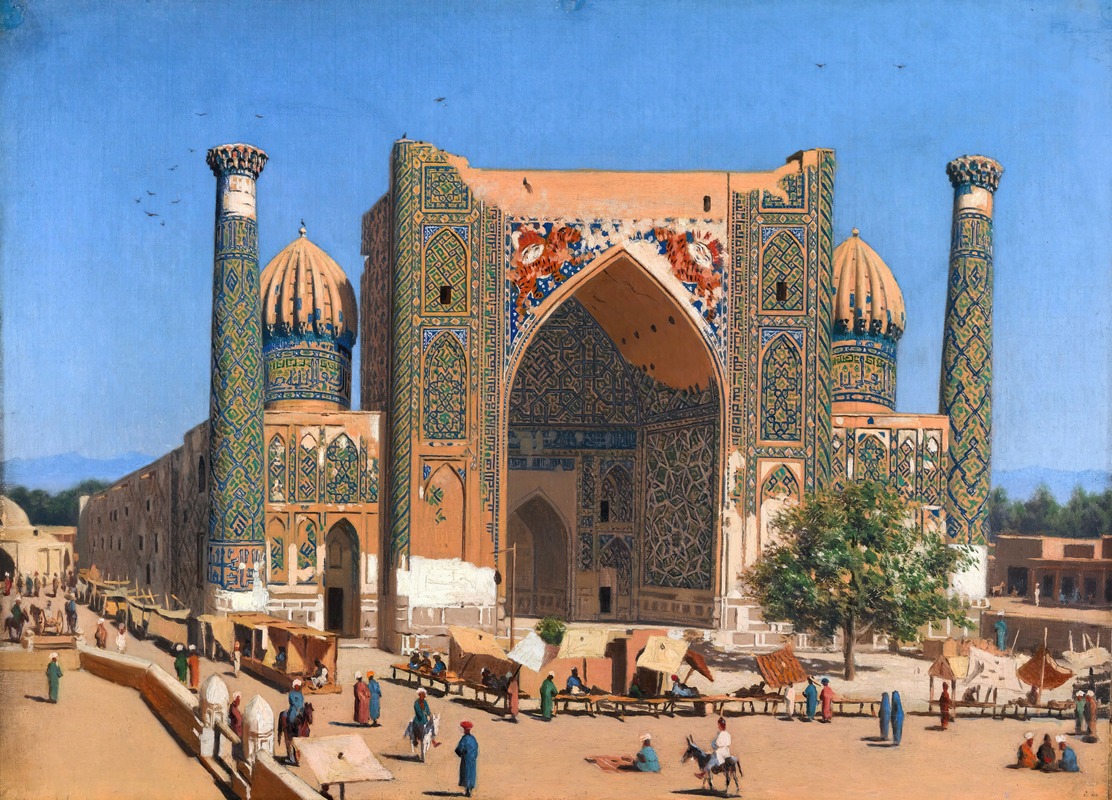
Medrasah Shir-Dhor at Registan place in Samarkand
A hand-painted replica of Vasily Vereshchagin’s masterpiece Medrasah Shir-Dhor at Registan place in Samarkand, meticulously crafted by professional artists to capture the true essence of the original. Each piece is created with museum-quality canvas and rare mineral pigments, carefully painted by experienced artists with delicate brushstrokes and rich, layered colors to perfectly recreate the texture of the original artwork. Unlike machine-printed reproductions, this hand-painted version brings the painting to life, infused with the artist’s emotions and skill in every stroke. Whether for personal collection or home decoration, it instantly elevates the artistic atmosphere of any space.
Vasily Vereshchagin was a renowned Russian painter known for his detailed and realistic portrayals of scenes from his travels, particularly in Central Asia. One of his notable works is "Medrasah Shir-Dhor at Registan place in Samarkand," which captures the architectural grandeur and cultural significance of the Registan in Samarkand, Uzbekistan.
The Registan is a public square in the heart of Samarkand, surrounded by three madrasahs, or Islamic schools, which are considered masterpieces of Islamic architecture. The Shir-Dor Madrasah, one of these three, was built between 1619 and 1636 by the order of Yalangtush Bahadur, a ruler of Samarkand. The name "Shir-Dor" translates to "having tigers" in Persian, a reference to the tiger mosaics that adorn the entrance portal of the madrasah. These mosaics are notable for their depiction of tigers with the sun rising from their backs, a design that is both symbolic and unique in Islamic art, which traditionally avoids the depiction of living creatures.
Vereshchagin's painting of the Shir-Dor Madrasah is a testament to his skill in capturing the intricate details and vibrant colors of the architecture. His work often focused on the interplay of light and shadow, and in this painting, he effectively conveys the grandeur and beauty of the madrasah's facade. The painting not only highlights the architectural elements but also provides a glimpse into the cultural and historical context of the time.
Vereshchagin traveled extensively throughout Central Asia in the late 19th century, a period when the region was undergoing significant changes due to Russian expansion. His works from this period are valuable historical records, offering insights into the architecture, landscapes, and daily life of the regions he visited. The painting of the Shir-Dor Madrasah is part of a larger body of work that Vereshchagin produced during his travels, which includes scenes from India, the Himalayas, and the Middle East.
The artist's approach was characterized by a commitment to realism and a desire to document the world as he saw it. This dedication to authenticity is evident in his portrayal of the Shir-Dor Madrasah, where he meticulously rendered the intricate tile work and the imposing structure of the building. Vereshchagin's work was not only appreciated for its artistic merit but also for its ethnographic value, providing a window into the cultures and places that were, at the time, largely unknown to the Western world.
In summary, Vasily Vereshchagin's painting of the Medrasah Shir-Dor at Registan in Samarkand is a significant work that captures the essence of one of Central Asia's most iconic architectural sites. Through his detailed and realistic portrayal, Vereshchagin offers viewers a glimpse into the rich cultural and historical tapestry of Samarkand, making his work an important contribution to both art and history.






